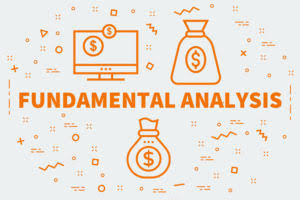Liability financial accounting Wikipedia

Managing liabilities is a crucial aspect of running a successful business. It involves anticipating future financial obligations and employing strategies to meet them while https://www.bookstime.com/ maintaining solvency. One of the key steps in planning for future obligations is to thoroughly analyze a company’s balance sheet, identifying both short-term and long-term liabilities. This enables decision-makers to prioritize their payments and allocate resources accordingly. Assets and liabilities in accounting are two significant terms that help businesses keep track of what they have and what they have to arrange for.
Company
- Failure to comply with debt covenants can have serious consequences, such as default or higher interest rates.
- Liability generally refers to the state of being responsible for something.
- In short, there is a diversity of treatment for the debit side of liability accounting.
- These are obligations owed to other entities, which must be fulfilled in the future, usually by transferring assets or providing services.
- Get instant access to video lessons taught by experienced investment bankers.
- Further, if you paid interest on student loans or are self-employed and paid health insurance premiums throughout the year, for example, you may be able to subtract those amounts from your gross income.
The tax code includes a number of deductions and credits that reduce what you actually hand over. If the company has borrowed funds, closely monitor debt covenants and ensure compliance with the terms and conditions. Failure to comply with debt covenants can have serious consequences, such as default or higher interest rates. Recognizing liabilities in the balance sheet can be tricky and a confusing bookkeeping responsibility.

What is an example of assets being turned into liabilities?

It means that crediting liability accounts increases their balances while debiting them decreases their balances. In the world of accounting, a liability refers to a company’s financial obligations or debts that arise during the course of business operations. These are obligations owed to other entities, which must be fulfilled in the future, usually by transferring assets or providing services. Liabilities play a crucial role in a company’s financial health, as they fund business operations and impact the company’s overall solvency.
Accounts Payable
In many cases, the accountant also presents additional information about the liabilities such as the type of creditor, the reason that the liability was created, and the existence of collateral agreements. To give another example, the exchange of promises of future performance between two firms or individuals does not result in the recognition of liability or the related asset. For liabilities to exist, an event or transaction must already have occurred. To recognize a liability, a firm does not need to know the actual recipient of the assets that are to be transferred, or for whom the services are to be performed. If this exclusion did not exist, it would be necessary to record all what is liability account future cash outflows as liabilities. Instead, accountants recognize only claims that have come about because of past events.
- Listed in the table below are examples of current liabilities on the balance sheet.
- Liabilities are debts and obligations of the business they represent as creditor’s claim on business assets.
- Liabilities are an effective way of getting money and is preferred over raising capital using equity.
- Liabilities are a component of the accounting equation, where liabilities plus equity equals the assets appearing on an organization’s balance sheet.
- Non-current Liabilities – Also termed as fixed liabilities they are long-term obligations and the business is not liable to pay these within 12 months.
Operating expenses are the costs incurred during the normal course of business operations. These expenses include items such as wages, rent, utilities, and other expenditures necessary to keep CARES Act the business running smoothly. In accounting, operating expenses are recorded as liabilities until they are paid off. For example, wages payable are considered a liability as it represents the amount owed to employees for their work but not yet paid.
- If you add up every dollar you earned in a year and take a look at your tax bracket, you will likely get a higher number than what you’re actually responsible for paying.
- At the same time, the cash account would be debited with the $100,000 of cash from the loan.
- Get free guides, articles, tools and calculators to help you navigate the financial side of your business with ease.
- Seeking expert advice and conducting further research can help individuals and businesses navigate the complexities of liability accounts and optimize their financial performance.
- In a business scenario, a liability is an obligation payable to a third party.
- Contingent Liabilities are obligations that may or may not occur.

In contrast, the table below lists examples of non-current liabilities on the balance sheet. Understanding liabilities is essential for anyone involved in corporate finance, from a business owner to a shareholder, as they indicate the financial health and obligations of a business. A liability is anything that’s borrowed from, owed to, or obligated to someone else. It can be real like a bill that must be paid or potential such as a possible lawsuit. A company might take out debt to expand and grow its business or an individual may take out a mortgage to purchase a home.
